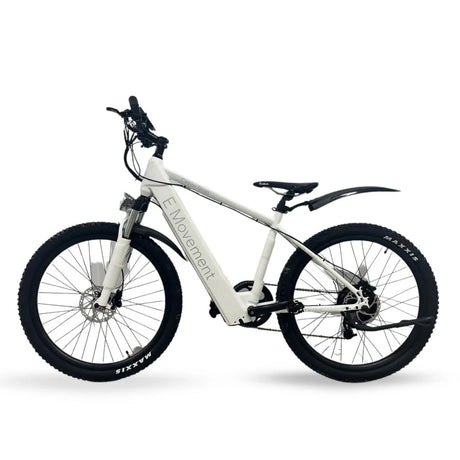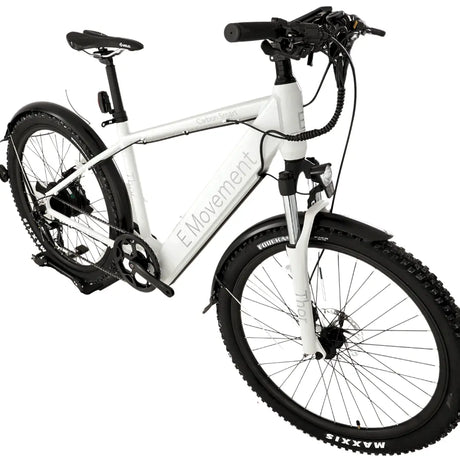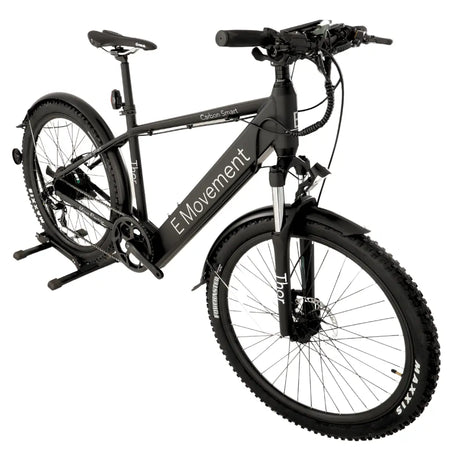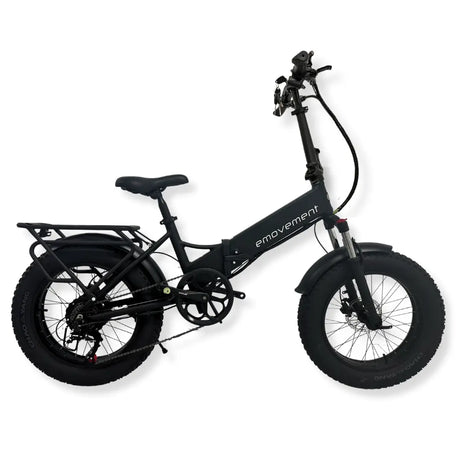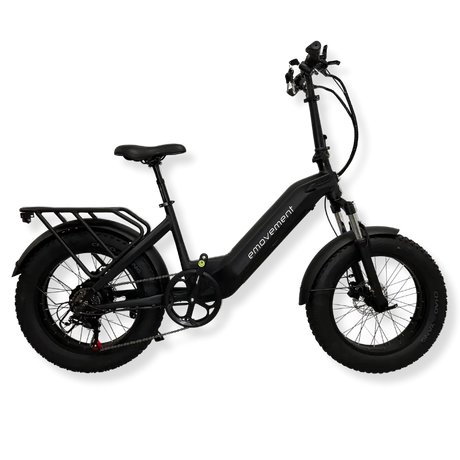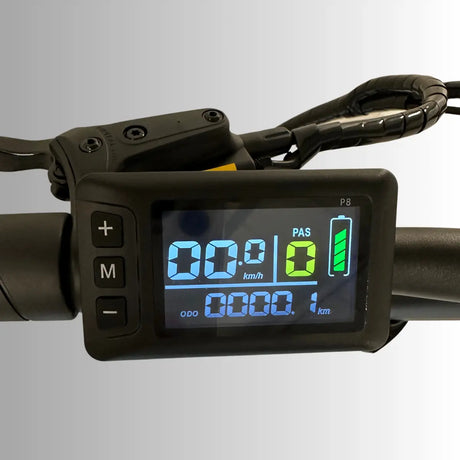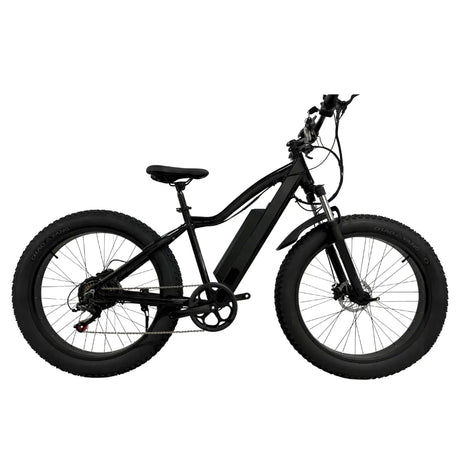Inside this Article:
- 1. What is Electric Bike Insurance?
- 2. Why You Need Electric Bike Insurance
- 3. The Types of E-Bike Insurance Coverage
- 3.1. Standard Coverage Options
- 3.2. Additional Coverage Options
- 3.3. Specialized Electric Bike Insurance Policies
- 4. Choosing Your Policy
- 5. The Application Process
- 6. Making an Insurance Claim After an E-Bike Accident
- 7. Legal Considerations and Compliance
- 8. Conclusion
- 9. FAQs
- 1. Do you need insurance for an electric bike?
- 2. How does the value of my electric bike affect my insurance premiums?
- 3. Can I insure an electric bike that I’ve built or customised myself?
- 4. What should I do if my electric bike is stolen?
- 5. Are there any discounts available for electric bike insurance?
- 6. Are electric bikes covered under homeowners insurance?
Electric bikes are revolutionising our commuting and leisure ventures by making journeys eco-friendly and a whole lot of fun. But, as with all prized possessions, safeguarding your e-bike against the unexpected is where the smart money's at. That's where electric bike insurance swings into action and offers a safety net for your high-tech ride.
You might be wondering, "Do I need insurance for an electric bike?" The answer isn't just a simple yes—it's a resounding one. Considering the investment you've made into purchasing an e-bike, coupled with the potential risks of theft, accidental damage, and liability, having a tailored insurance policy isn't just wise; it's essential. Keep reading as we navigate the ins and outs of insurance for electric bikes in the UK.
1. What is Electric Bike Insurance?
Electric bike insurance is a specialised insurance type for electric bikes, providing coverage that extends beyond the protections typically found in standard bicycle insurance policies. This insurance covers a range of potential risks, including theft, accidental damage, liability, and, in some cases, breakdown assistance. Unique to e-bikes, certain policies also cover electrical components, like batteries and motors, acknowledging the higher value and complexity of these vehicles compared to traditional bicycles.
Differing significantly from both standard bicycle and auto insurance, e-bicycle insurance addresses the middle ground where these two meet. Unlike standard bicycle insurance, e-bike insurance often entails coverage for electrical faults and higher liability limits due to the potential for greater speeds and risks. In contrast, it's distinct from auto insurance as it doesn't require elements like a driver's licence, given that electric bikes don't match the speed or power of traditional motor vehicles.

2. Why You Need Electric Bike Insurance
Navigating the landscape of electric bike ownership in the UK comes with its set of rules and necessities—insurance being a pivotal one. But, do you need insurance for an electric bike? The answer isn't a straightforward yes for every e-bike. It hinges on the type of bike you own. Specifically, the distinction lies between Electrically Assisted Pedal Cycles (EAPCs) and mopeds that don't fit the EAPC criteria.
2.1. The Electric Bike Insurance Law in the UK
EAPCs are defined by specific criteria: they must have pedals to propel the bike, while the electric motor shouldn't exceed 250 watts and assist speeds beyond 15.5 mph. If your e-bike fits the EAPC criteria, you're not legally required to have insurance because it's considered similar to a conventional bicycle.
However, for electric bikes that exceed these specifications, you're stepping into territory where the vehicle is classified more like a moped or motorbike. This means those with motors more powerful than 250W or featuring throttle assist that propels the bike without pedalling. In these cases, the law requires you to have insurance, similar to any other motor vehicle on the road. You should ensure that you're covered for liability, and accidents, and in compliance with UK regulations .
If you do not intend to use your electric bike on roads or public spaces but only have it for off-road use, for instance, on private property, you do not need to license, tax, or insure your electric bike, but we’ll still recommend it.
2.2. Reasons to Insure Your Electric Bike
Even if your e-bike qualifies as an EAPC and doesn't necessitate insurance by law, there are compelling reasons to consider getting insured:
-
The Value of Your Electric Bike
Electric bikes represent a significant investment, often costing substantially more than traditional bicycles. With advanced technology, batteries, and motors, replacing or repairing an e-bike can be a costly affair. Insurance helps protect this investment so that you're not out of pocket if the unexpected happens.
-
Risks Covered: Theft, Damage, and More
Theft is a real risk, especially given the high value and desirability of e-bicycles. Damage is another potential cost, whether from accidents, vandalism, or mishaps. Comprehensive electric bike insurance covers these risks, offering peace of mind that you can get back on the road quickly.
-
Liability Considerations
E-bikes can reach higher speeds and may pose a higher risk of accidents. If you're involved in an accident that causes injury to someone else or damage to their property, liability coverage is invaluable. It can cover legal fees and compensation, and protect you financially.

3. The Types of E-Bike Insurance Coverage
Specific prices for e-bike insurance in the UK can vary based on several factors, such as the make and model of your bike, your location, and the level of coverage you choose. In this section we’ll explore the types of coverage available and a general pricing guide to give you a better understanding of what you might expect to pay:
3.1. Standard Coverage Options
Standard coverage options form the backbone of electric bike insurance, providing essential protection against the most common risks:
3.1.1. Theft and Vandalism
As a fundamental necessity for every e-bike owner, this coverage ensures you're not left out of pocket if your bike is stolen or subjected to vandalism. Prices typically start from around £5 per month, depending on the bicycle value and where you live.
3.1.2. Accidental Damage
Accidents happen, and when they do, accidental damage coverage has your back. It will protect you against the cost of repairs or replacement. Costs for the coverage can start from £6 per month, influenced by the risk level and the electric bike's value.
3.1.3. Liability Coverage
This coverage is crucial for financially protecting yourself if you're found liable for injury or damage to others . Liability coverage can be included in basic plans, starting at approximately £5-£10 per month. It can vary by coverage limits and additional policy features.
3.2. Additional Coverage Options
Additional coverage options provide added layers of protection, covering aspects beyond the basics to cater to specific needs:
3.2.1. Personal Accident
Offering a financial safety net in the unfortunate event of serious injury, getting this coverage is wise. Starting prices are around £8 per month, reflecting the broad range of accidents and injuries covered.
3.2.2. Breakdown Assistance
Breakdown assistance is an invaluable service for when mechanical or electrical issues leave you stranded and ensure you're not left on the side of the road. It can often be added for an extra £3-£5 per month on top of your standard policy.
3.2.3. Accessories and Custom Parts
For those who've personalised their e-bike, this ensures your additional investments are protected. Coverage costs can increase your premium by £2-£10 per month, depending on the total value of accessories and custom parts insured.
3.3. Specialized Electric Bike Insurance Policies
Specialised policies cater to the unique needs of certain riders and bikes, offering tailored coverage for those out of the ordinary circumstances:
3.3.1. For High-Value E-Bikes
Luxury electric bikes require more comprehensive protection to match their increased value and potential repair costs. Premiums for high-value e-bike coverage can start from £20 per month based on the vehicle’s value and the extent of coverage you want.
3.3.2. For Professional or Competitive Use
Riders who push their e-bicycles to the limits in a professional or competitive context need coverage that keeps pace. Specialised policies for these uses can start from around £25 per month.

4. Choosing Your Policy
Selecting the ideal insurance policy for your electric bike is equivalent to finding the perfect cycling gear; it requires attention to detail, understanding your needs, and ensuring your choice enhances your riding experience. Let’s now consider how you should navigate the process of choosing a policy:
4.1. Factors to Consider When Choosing a Policy
Finding the right insurance policy involves more than just opting for an affordable option. It's about securing a safety net that's tailored to your specific needs. Keep these considerations in mind:
4.1.1 Coverage Limits
This is the maximum amount your insurance company will pay in the event of a claim. It's essential to check that the coverage limit is high enough to cover the total value of your e-bike, especially if it's a high-end model. Consider how you use your electric bike, where you ride, and the potential risks to determine adequate coverage limits.
4.1.2. Deductibles
A deductible is the amount you're responsible for paying out of pocket before your insurance coverage kicks in. Higher deductibles might lower your premiums, but they also mean more out-of-pocket costs when you file a claim. We recommend selecting a deductible that balances affordability with your financial security.
4.1.3. Exclusions and Limitations
Every policy has its limitations and exclusions. These could include scenarios where coverage doesn't apply, such as wear and tear, mechanical failures , or damages incurred during competitive racing . Understanding these details upfront can help you avoid unexpected surprises and ensure you're fully protected.
4.2. How to Compare Insurance Providers
Once you've determined the type of coverage you need, the next step is to compare insurance providers to find the best fit for your requirements:
4.2.1. Reputation and Reviews
Start by researching the insurer's reputation. Look for reviews from other e-bike owners and read their experiences, focusing on customer service, claim handling, and satisfaction. A provider with a strong reputation is likely to offer a more reliable and supportive insurance experience.
4.2.2. Claims Process and Support
The ease of filing a claim and the level of support provided are crucial factors. It’s in your best interest to opt for insurers with a straightforward claims process and accessible customer support. Providers that offer online claim filing, 24/7 support, and helpful customer service representatives can make the claims experience less stressful.
4.2.3. Price vs. Coverage
Finally, compare the cost of the insurance policies against the coverage they offer. The cheapest option isn't always the best if it doesn't provide the protection you need. Conversely, the most expensive policy might offer coverage that exceeds your requirements. Strive for a balance between cost and coverage to make sure you get the best value for your investment.

5. The Application Process
Embarking on the journey to secure electric bike insurance can be as straightforward as planning your next bike route, provided you have a clear map of what’s ahead. Here’s what you need to know about the application process and how to make informed decisions that benefit you financially:
5.1. Getting Started with Your Application
Before you start your e-bike insurance application, it’s a good idea to gather the necessary information and understand the terms so you can select the best coverage for your needs:
5.1.1. Information You’ll Need
You’ll need to gather essential details about yourself and your electric bike when diving into the application process. This includes the make, model, and serial number of your bike, personal identification, and contact information. You should also be ready to disclose how you use your e-bike, such as for commuting or recreational purposes, and any storage or security measures you have in place. Accurate and comprehensive information is crucial for obtaining a quote that reflects your needs and risk profile.
5.1.2. Understanding the Fine Print
Before you put pen to paper or click ‘submit’ on your application, take a moment to delve into the policy’s terms and conditions. Here, you’ll find all the information on coverage limits, deductibles, exclusions, and your obligations as a policyholder. Pay special attention to the claims process, policy renewal terms, and any conditions that could affect your coverage. Understanding these details upfront can save you from future surprises and ensure you’re fully aware of the protection you’re purchasing.
5.2. Tips for Lowering Your Premiums
Once you’re familiar with the application process and what your policy entails, consider these strategies to potentially lower your insurance premiums without compromising on coverage:
5.2.1. Security Measures
Investing in robust security measures for your e-bike not only deters theft but can also lead to lower insurance premiums. Consider using certified locks , securing your bike in a locked garage or shed, and installing a GPS tracker. Insurance providers often offer discounts for bikes that are well-protected since they recognize the reduced risk of theft.
5.2.2. Opting for Higher Deductibles
Choosing a higher deductible can significantly reduce your insurance premiums. This strategy involves paying more out of pocket in the event of a claim, so it’s important to balance the potential savings on premiums with your ability to cover the deductible if needed. Opt for a deductible that’s affordable for you by considering your financial situation and risk tolerance.
5.2.3. Bundle Policies
If you already have other insurance policies with a provider, such as home or auto insurance, bundling your e-bicycle insurance with these policies can often lead to savings. Many insurers provide discounts for multiple policies. It’s worth inquiring about bundle options and comparing the overall costs and benefits with those of separate policies.

6. Making an Insurance Claim After an E-Bike Accident
Figuring out the claims process after an incident with your electric bike doesn't have to feel like traversing a rocky path. In this section, we’ll help prepare you to handle any bumps along the way of your e-biking adventures:
6.1. The Claims Process: Step by Step
Navigating the claims process effectively requires knowing what to do from the moment an incident occurs:
6.1.1. Immediate Steps Following an Incident
- Safety First: Ensure everyone involved in the incident is safe and secure. Contact emergency services if necessary .
- Notify the Police: For theft, vandalism, or accidents involving others, report the incident to the police immediately. Obtain a police report or a reference number, as this will be required by your insurance company.
- Document the Scene: Take photographs of the incident scene, your e-bike's condition, and any relevant surroundings. If there were any witnesses, collect their contact information.
- Inform Your Insurance Provider: Contact your insurer as soon as possible to report the incident. They will guide you through their specific claims process and what information they need from you.
6.1.2. Documentation and Evidence
Gather all necessary documentation, including your insurance policy details, purchase receipts for your e-bike and any damaged personal property, police reports, and photographic evidence. Detailed records and prompt, organised documentation can significantly speed up the claims process.
6.1.3. Dealing with Adjusters
Insurance adjusters will review your claim to determine the payout. Be honest, detailed, and cooperative in your interactions, but also know your policy well so you can ensure your claim is fairly assessed. Don’t hesitate to ask questions if you’re unsure about any part of the process.
6.2. Getting the Most Out of Your Claim
Maximising your claim involves understanding common pitfalls and how to negotiate effectively with your insurance company:
6.2.1. Common Pitfalls to Avoid
- Delay in Reporting: Failing to report the incident to both the police and your insurance provider in a timely manner can complicate the claims process.
- Incomplete Documentation : Not providing sufficient evidence or documentation can lead to delays or disputes over claim amounts.
- Accepting the First Offer: Quickly accepting the first settlement offer without fully understanding if it covers your losses can result in receiving less than you’re entitled to.
6.2.2. Negotiating with Your Insurance Company
If the settlement offer from your insurance company doesn’t fully cover your losses or you believe it’s unfair, you can negotiate the terms. Here’s how:
- Review Your Policy: Understand the coverage details and limits of your policy to ensure the offer aligns with what you’re entitled to.
- Compile Your Evidence: Use your documentation and evidence to build a strong case for a higher payout.
- Communicate Effectively: Present your case clearly and professionally, outlining why you believe the offer should be adjusted. Be prepared to back up your claims with evidence.
- Consider Assistance: If negotiations stall or you’re not comfortable handling them on your own, consider seeking help from a legal advisor who specialises in insurance claims.
7. Legal Considerations and Compliance
The legal landscape of electric bike insurance requires an understanding of both local and international regulations. This way, you can ensure that your e-bike adventures with E-Movement models like Raven or Pixie are both enjoyable and compliant with the law:
7.1. Legal Requirements for Electric Bike Insurance
Understanding the specific legal requirements for insuring your electric bike is crucial for staying compliant and protected on the road:
7.1.1. Understanding Local Laws and Regulations
Different regions may have different requirements for electric bike insurance, especially concerning liability coverage and whether your e-bike is classified as a standard bicycle or a motor vehicle. You should familiarise yourself with local laws so that your insurance coverage meets minimum legal standards and protects you adequately in case of an incident.
7.1.2. International Travel with Your Electric Bike
If you're planning to take your electric bike abroad, it's important to research and understand the insurance requirements and road laws of the countries you'll be visiting. Some countries may have specific insurance mandates for electric bikes, which may not be provided by your coverage overseas. Ensuring you have the appropriate international coverage can protect you from unexpected costs and legal issues while travelling .
7.2. Staying Compliant
Maintaining compliance with insurance regulations is an ongoing process that requires attention to detail and regular updates to your policy:
Your insurance needs may change over time due to e-bike modifications, changes in local laws, or shifts in your own riding habits and storage conditions. Keeping your insurance provider informed of any changes to your bike or its usage can help ensure that your coverage remains adequate and valid. It’s recommended to regularly review and update your policy to stay compliant with both legal requirements and your insurance contract terms.

8. Conclusion
Delving into the intricacies of electric bike insurance in the UK is essential for every electric bike owner, protecting you against theft, damage, and liability. From understanding the specific types of coverage available and their costs to grasping the legal requirements and the claims process, being well-informed allows you to choose the most appropriate policy for your needs. Ultimately, investing time in selecting the right insurance coverage underscores the importance of safeguarding your investment and your peace of mind. This way, you can fully embrace the freedom and joy that come with owning an e-bike.
9. FAQs
1. Do you need insurance for an electric bike?
In the UK, if your e-bike is classified as an Electrically Assisted Pedal Cycle (EAPC) that doesn’t exceed 25 km/h and has a motor output of 250 watts, you are not legally required to have insurance. However, you have to insure your electric bike if it surpasses these specifications since it may be classified similarly to motor vehicles. Regardless of legal requirements, having insurance is highly recommended for all electric bike owners to cover potential theft, damage, and liability.
2. How does the value of my electric bike affect my insurance premiums?
The value of your electric bike plays a significant role in determining your insurance premiums. Higher-value e-bikes usually come with higher premiums due to the increased cost of replacement or repair. Insurers consider the bike’s replacement value when setting the premium, so it's important to accurately declare the value of your e-bicycle when applying for insurance.
3. Can I insure an electric bike that I’ve built or customised myself?
You can insure an electric bike that you've built or customised yourself. However, you may need to provide detailed information about the bike, such as component costs, any custom features, and the total build value. Insurers might require additional documentation for custom or self-built bikes to accurately assess their value and risk.
4. What should I do if my electric bike is stolen?
If your electric bike is stolen, immediately report the theft to the police and obtain a crime reference number. Then, contact your insurance provider to file a claim, providing them with the crime reference number, details of the incident, and any evidence of ownership and the e-bike’s value. Swift action and thorough documentation can aid in the smooth processing of your claim.
5. Are there any discounts available for electric bike insurance?
Many insurers offer discounts for electric bike insurance for various reasons. This can include securing your bike with approved locks, storing it in a secure location, having multiple bikes on the same policy, or being a member of certain cycling organisations. Additionally, some providers offer lower premiums for riders who agree to a higher deductible or those who have a history of safe riding. It's worth asking insurance providers about any discounts for which you may be eligible.
6. Are electric bikes covered under homeowners insurance?
House insurance can cover electric bikes, but the extent of the coverage and specifics may vary significantly based on the policy and insurance provider. Homeowners insurance typically covers personal property against theft or damage, which can include bicycles and, by extension, e-bikes


